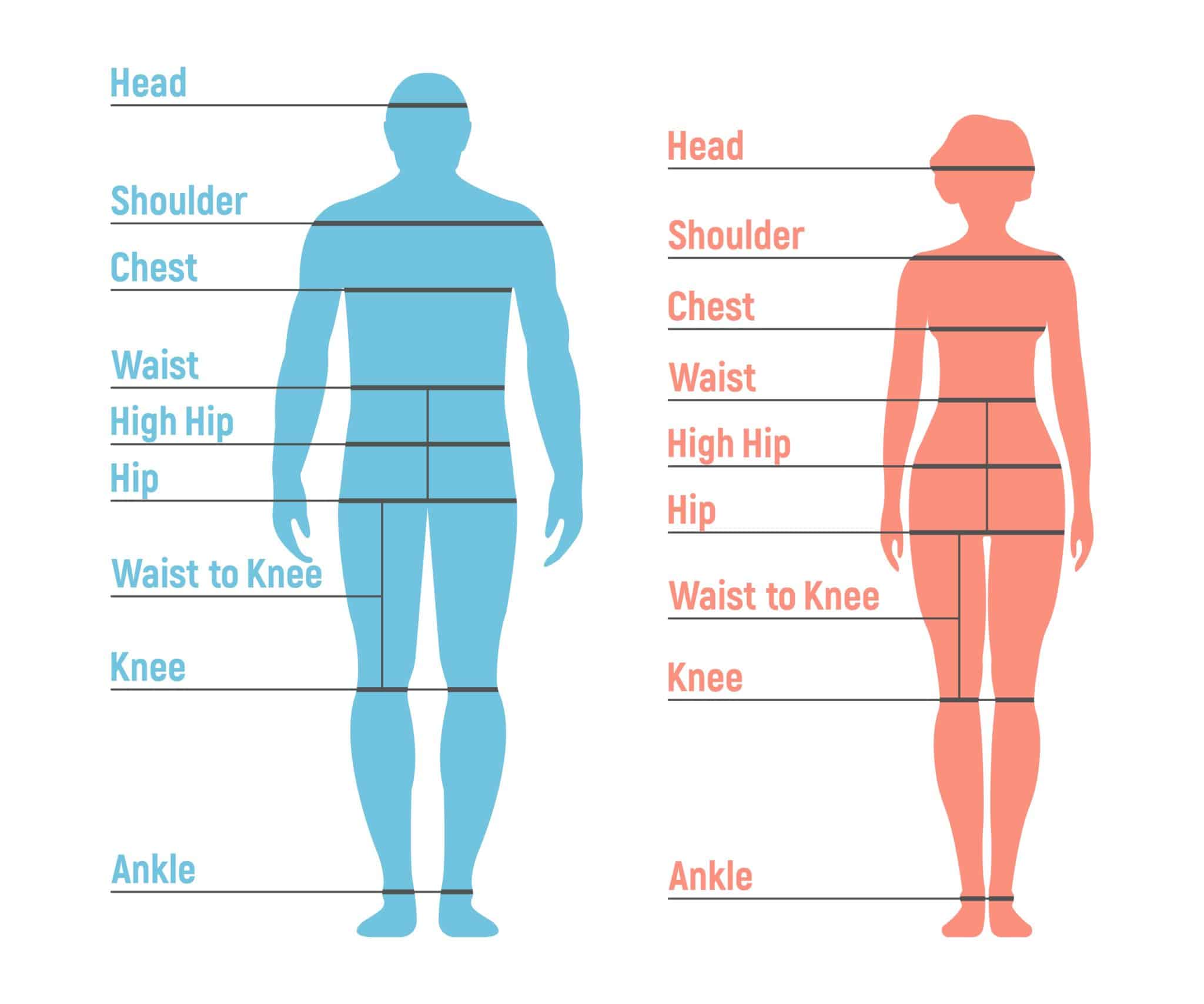The Importance of Precision
Knowing your measurements is crucial for various reasons, whether you’re tailoring a suit, finding the perfect off-the-rack fit, or determining your body fat percentage. Accurate measurements ensure a personalized and flattering fit for your clothes, allowing you to feel confident and comfortable in your ensemble. Additionally, measuring yourself regularly can be an effective tool for tracking progress towards your fitness goals.

Image: soreyfitness.com
Before delving into specific measurements, it’s essential to understand the key tools you’ll need: a flexible measuring tape, a pen and paper for recording, and a mirror for reference. Now, let’s embark on a comprehensive guide to taking accurate measurements:
Step-by-Step Measurement Techniques
Neck Measurement
- Place the tape around the base of your neck, ensuring it’s parallel to the ground.
- Keep the tape snug, but not constricting, and read the measurement in inches or centimeters at the starting point.
- Round up to the nearest half inch or centimeter.
Chest Measurement
- Position the tape around the fullest part of your chest, usually just under the armpits.
- Keep the tape level and run it around your back, ensuring it’s parallel to the ground.
- Note the measurement where the tape meets its starting point.

Image: www.pinterest.ca
Waist Measurement
- Locate the natural crease of your waist, which is typically the narrowest part of your torso.
- Wrap the tape around your waist, keeping it level and snug without digging into your skin.
- Read the measurement at the starting point, rounding up to the nearest half inch or centimeter.
Hip Measurement
- Stand with your feet shoulder-width apart.
- Place the tape around the widest part of your hips, ensuring it’s parallel to the ground.
- Record the measurement where the tape meets its starting point, rounding up to the nearest half inch or centimeter.
Expert Tips and Advice
The Importance of Consistency
Consistency is key when it comes to taking measurements. For instance, if you measure your chest in the morning and your waist at night, you may not get an accurate representation of your body. Choose a specific time of day, preferably in the morning, and always measure in the same order for consistency.
Professional Alterations
If you’re investing in a custom-tailored garment, consider consulting a professional to take your measurements. They have the expertise to ensure the most precise results, which are crucial for achieving the perfect fit.
FAQ
Q: When should I update my measurements?
A: It’s a good practice to update your measurements every few months, especially if you are experiencing significant weight fluctuations or pursuing fitness goals.
Q: What are some common mistakes to avoid when measuring?
A: Avoiding slouching, pulling the tape too tightly, and measuring over clothing can lead to inaccurate results.
How To Take Measurements Men
Conclusion
Taking accurate measurements is a fundamental skill for men who value a well-fitted wardrobe and a comprehensive understanding of their bodies. By following the techniques outlined in this guide and incorporating the expert advice, you can master the art of measurement and reap the benefits for years to come. Embrace the knowledge and empower yourself to achieve a polished appearance and a deeper understanding of your physique.
We welcome any questions or comments you may have on this topic. Your input is invaluable in helping us provide the most comprehensive information possible.